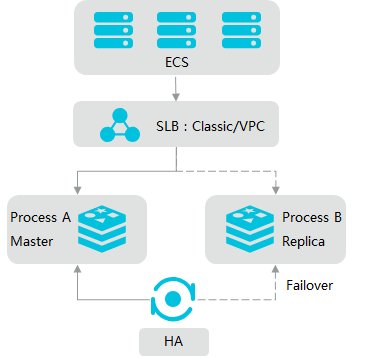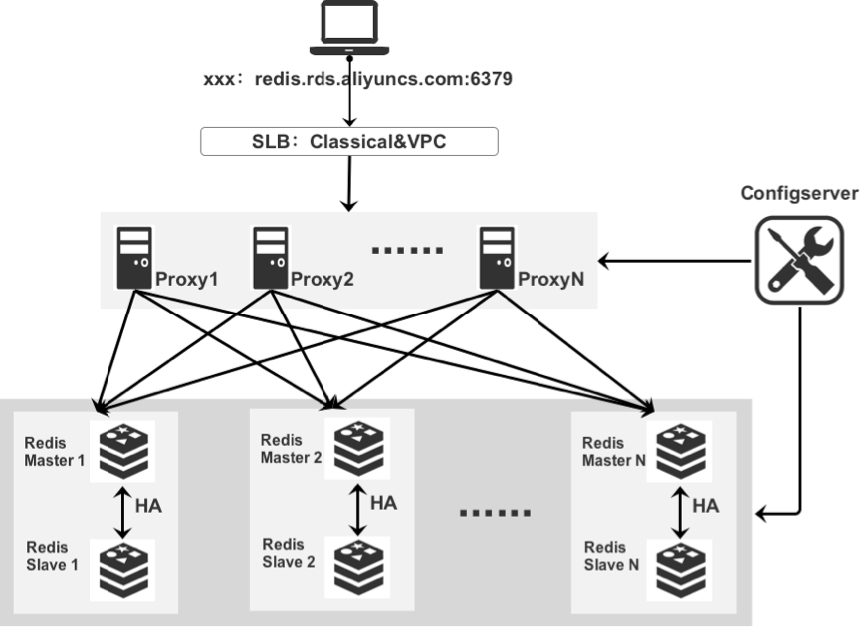Tair(Redis OSS-compatible) supports the standard, cluster, and read/write splitting architectures. You can select an architecture that suits your business requirements.
Architectures
The following table describes the supported instance architectures. You can click the link to an instance architecture to view details about the architecture.
Instance architecture | Architecture diagram | Scenario |
Standard master-replica architecture The master-replica architecture is used to ensure high availability. |
|
|
Cluster master-replica architecture In the cluster architecture, each data shard runs in master-replica mode. |
|
|
Read/write splitting architecture The read/write splitting architecture consists of the master and replica nodes and multiple proxy nodes. |
|
|
Documentation applicability
You must understand the following concepts in Tair (Redis OSS-compatible): architectures, editions such as Redis Open-Source Edition and Tair (Enterprise Edition), series types such as DRAM-based instances, and engine versions such as Redis 4.0 and 5.0. The descriptions and topics listed in the preceding table are applicable to related editions, series types, and engine versions. To view architecture information of standard instances, see Standard master-replica instances. This rule also applies to cluster and read/write splitting instances.


